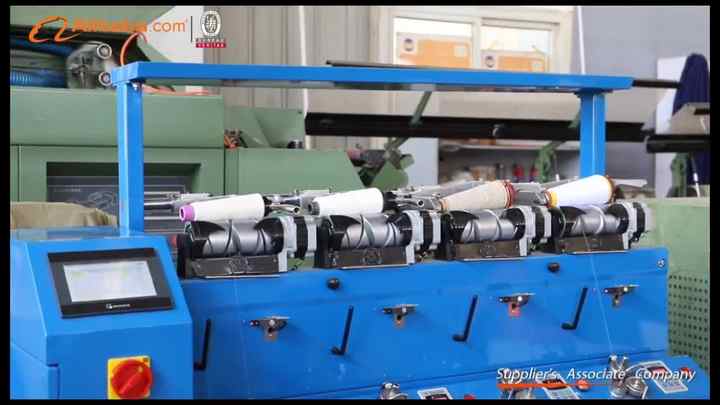Choosing the Best-Suited Optical Fibre Diameter Analyser for High Precision
Choosing the Best-Suited Optical Fibre Diameter Analyser for High Precision
Blog Article
Enhance Your Fiber Optic Projects With a Reliable Size Analyser
The integration of an effective diameter analyser right into fiber optic projects serves as a pivotal component in accomplishing accuracy and consistency. By facilitating accurate diameter measurements, these analysers not only boost the high quality of installations yet also minimize prospective compatibility concerns among elements.
Importance of Diameter Dimension
Measuring the diameter of fiber optic cables is a vital job that makes certain ideal efficiency and dependability in interaction systems. Exact diameter measurement is crucial for various factors, mainly for keeping signal honesty and decreasing loss. A wire's diameter straight influences its capacity to send light properly; deviations from the defined size can result in raised depletion, which influences the general efficiency of the network.
Furthermore, precise measurement is essential throughout the setup and upkeep of fibre optic systems. An improper fit between cables and connectors can cause signal degradation or full failing of communication web links. By guaranteeing that diameters are within specified resistances, specialists can improve compatibility between parts, bring about better system dependability.
In enhancement, size dimension plays a substantial function in quality assurance during production. Consistency in the size of fibre optic cables is essential for guaranteeing consistent performance throughout different sets. optical fibre diameter analyser. This uniformity aids manufacturers maintain sector criteria and fosters confidence among end-users
Functions of an Efficient Analyser
An effective analyser for fibre optic projects need to include several key attributes that improve precision and usability in size measurement. High-resolution optical sensing units are necessary for exact diameter readings, allowing customers to find even the slightest variations in fiber density. These sensors must be enhanced by innovative calibration systems, ensuring consistent performance throughout different conditions and materials.
Second of all, an user-friendly interface is important for facilitating ease of procedure. This consists of user-friendly software application that permits seamless information input and output, along with visual depictions of the dimensions taken. A portable layout enhances functionality in different area environments, making it simpler to carry out analyses on-site.
Additionally, the analyser must support multiple measurement settings, fitting various fibre kinds and applications. The ability to shop and get historical data is one more essential function, allowing customers to track efficiency over time and make informed decisions.
Advantages for Fiber Optic Projects
Applying a diameter analyser in fiber optic tasks supplies significant benefits that dramatically boost task performance and high quality. One of the key benefits is the capability to guarantee exact dimensions of fibre diameter, which is essential for preserving optimal efficiency in fibre optic systems. Accurate diameter readings help in the recognition of inconsistencies that can lead to signify degradation or loss, thus ensuring premium transmission.
Furthermore, using a diameter analyser enhances the quality control procedure. By automating measurement jobs, task teams can minimize the moment invested on hand-operated examinations, causing faster task conclusion and reduced work costs. This efficiency also enables for more strenuous screening protocols, causing enhanced product dependability.
Furthermore, uniformity in fiber size dimensions advertises compatibility with various other fibre optic parts, minimizing the threat of setup errors and boosting total system performance. The incorporation of a diameter analyser not only help in keeping market requirements but also promotes self-confidence in project deliverables.
Combination Into Existing Operations
Integrating a diameter analyser into existing workflows can significantly boost the functional effectiveness of fibre optic tasks. By flawlessly integrating this modern technology, teams can achieve specific dimensions that are important to preserving the stability and performance of fibre optic systems. This combination permits real-time data collection and evaluation, which can be important throughout the production and installation stages.
In addition, the ability to automate size dimension procedures reduces the capacity for human mistake, Continued making sure regular top quality control throughout the task lifecycle. The data created can be quickly shared across systems, facilitating collaboration amongst engineers, professionals, and job supervisors. This accessibility boosts decision-making and increases project timelines.

Picking the Right Diameter Analyser
When choosing a size analyser for fibre optic tasks, it is crucial to consider a number of crucial variables that directly impact dimension precision and operational effectiveness. Initially, the resolution and precision of the analyser ought to line up with the particular demands of your task. Greater resolution tools can find minute variants in size, which is critical for making sure ideal performance in fibre optic systems.
Following, examine the speed of dimension. For projects with tight deadlines, a size analyser that uses rapid information purchase can substantially boost productivity. Additionally, think about the analyser's compatibility with existing systems and software application. A seamless combination decreases configuration time and lessens disturbances throughout procedures.
Another vital variable is the variety of sizes the analyser can suit. By meticulously reviewing these elements, you can choose a diameter analyser that improves the efficiency and precision of your fibre optic jobs.
Final Thought
To conclude, the integration of an effective size analyser is critical for improving fiber optic jobs. Specific diameter measurements ensure optimum performance and reliability while decreasing setup errors. Advanced features promote real-time information collection and compliance with market criteria, eventually elevating the top quality of deliverables. By prioritizing the choice and implementation of a proper analyser, project performance is dramatically improved, leading the way for effective outcomes in fiber optic applications.
A cable television's size straight influences its capability to send light effectively; deviations from the specified diameter can lead to increased attenuation, which impacts click this the general performance of the network.

Report this page